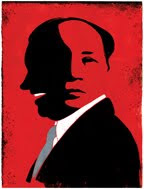*drum roll please!*
Congratulations Deborah Ong! You've won 2 tickets to Nixon in China, $150 gift certificate to Floata Seafood Restaurant and admission for 2 to Dr. Sun Yat Sen Classical Chinese Gardens.

Here are the answers to the clues:
Clue #1: It’s the skinniest building in the world – and the place to go if you need a marriage license.

Sam Kee Building
The Sam Kee Company bought the land as a standard sized lot in 1903. In 1912, the city widened Pender Street and expropriated 24 feet of the lot.
The building was designed by architects Brown and Gillam in 1913. It is 4’11” wide at its ground-floor base and only 6’ wide at the second-story bay windows. There is a basement that extends under the sidewalk, which originally housed public baths, while the ground floor was used for office and shops, and the top story for living quarters.
The rehabilitation of the building was designed by Soren Rasmussen Architect and completed in 1986 for Jack Chow Insurance.
The Guinness Book of Records and Ripley’s Believe it or Not! have both declared it the thinnest commercial building in the world. Recently, though, this status has been challenged by the Skinny Building in Pittsburgh, which is 5’2” wide on all floors.
Clue #2: It’s the first full-size Chinese garden built outside of China and is named in honour of the first president of China.

Dr. Sun Yat-Sen Classical Chinese Garden
The Dr. Sun Yat-Sen Garden consists of a public park (free) and a garden(entrance by admission). It was built between 1985 and 1986, with the park designed by Joe Wai and Donald Vaughan, and the garden by Wang Zu-Xin, with the guidance of experts from the Landscape Architecture Company of Suzhou, China. The garden opened on April 24, 1986, in time for Expo 86.
The mandate of the garden is to “maintain and enhance the bridge of understanding between Chinese and western cultures, promote Chinese culture generally and be an integral part of the local community.
The garden in named in honour of Dr. Sun Yat-Sen, the father of modern China, who had a strong connection to Vancouver. Dr. Sun stayed in Vancouver on several occasions while traveling the world to raise awareness and funding for the Chinese nationalist movement. The large presence of Chinese nationalists in BC helped finance the Chinese nationalist revolution that overthrew the Qing Dynasty in 1911, after which Dr. Sun Yat Sen became the first president of China.
Clue #3: The 3 ½ storey neon rice bowl may be gone, you can still get some mean sticky rice with chicken here!

Foo’s Ho Ho Restaurant/Sun Ah Hotel
This building was constructed in 1911. The Ho Ho Restaurant opened in 1954, in the ground floor of the Sun Ah Hotel, where working-class Chinese men lodged.
The famous Ho Ho’s neon sign was a Vancouver landmark: a 3 ½ storey high bowl of rice, complete with chopsticks and rising steam. Sadly, the sign deteriorated over the years and repair costs were beyond the owner’s means and it was removed in 1997, a few years after the Ho Ho had closed.
In 1998, Foo’s, another nearby landmark restaurant relocated to the old Ho Ho’s location. The new restaurant was renamed Foo’s Ho Ho and continues to serve traditional Chinese village fare. Many groups hold monthly and annual meetings there, including the Chinese Canadian Historical Society of British Columbia.
Clue #4: This "Assocation" is so "Benevolent" it needs two locations! (But you only have to find one for the History Hunt).

The Chinese Benevolent Association of Vancouver
The Chinese Benevolent Association was founded in 1895 as an organization to provide support and leadership within the growing Chinese Canadian community. Since then the CBA has worked to promote equality for Chinese Canadians, as well as reaching out to other community groups.
In 1913, the CBA distributed food to unemployed Chinese Canadians, and in 1924 lobbied for a review of Canada’s immigration laws. In 1947, it launched an appeal to grant Chinese Canadians the right to vote, and between 1947 and 1967 solicited amendments to Canadian immigration laws to facilitate the reunification of Chinese Canadian families.
Since then, the CBA has worked to provide low cost housing, and implemented fund raising campaigns to assist victims of natural disasters in Canada and China. The CBA is also the organizer of the Chinese New Year Parade.
In 2006, CBA was inducted into the Vancouver Board of Trade’s Business Hall of Fame-a first for an ethnic community association.
Clue #5: Visit this "Centre"’s museum & archives to get some "Culture"!

Chinese Cultural Centre
In 1972 at a Wong’s Benevolent Association banquet, representatives of the three levels of government pledged to support the proposal of a community centre in Chinatown. The Chinese Cultural Centre of Vancouver was founded the following year, and a dedicated complex of buildings, spanning a full city block, was completed in 1980. A branch office was opened in Richmond in 1991.
Some of our contestants were kind enough to let us put up their pictures, they had so much fun with our hunt.

Melissa

Nicole
They may have been a wee-bit camera shy, but these hunters were happy for us to put up their pics!

Mini Bree

LJ and Johnny the Bear
Thanks to everyone who had participated in our Chinatown History Hunt!
~ Ling Chan & Selina Rajani

0 Response to "Chinatown History Hunters"